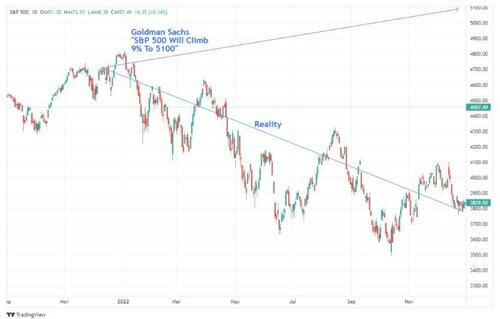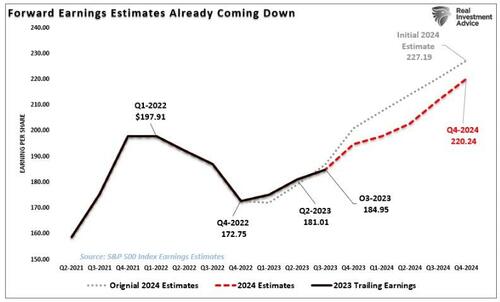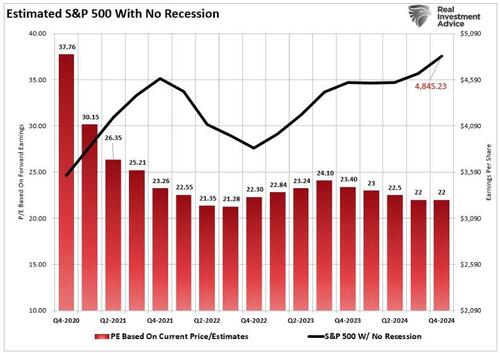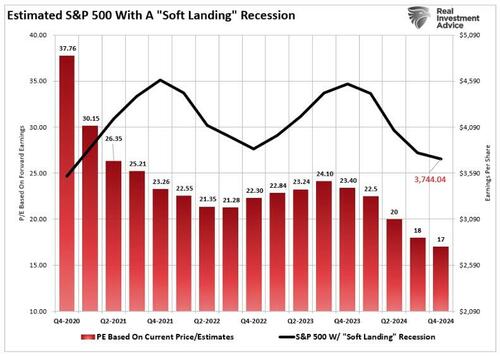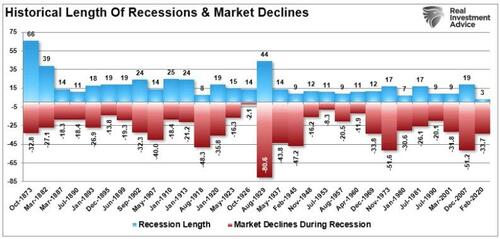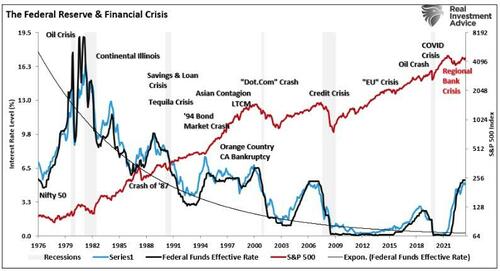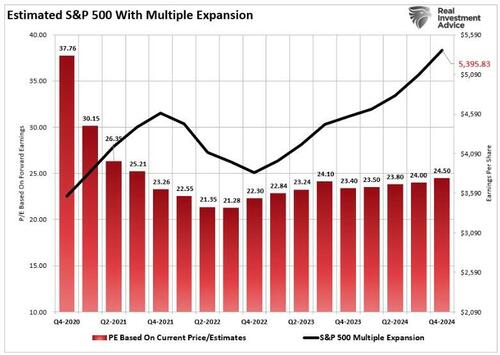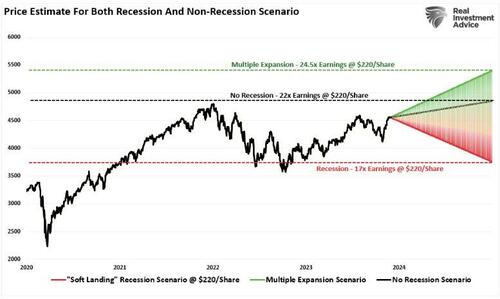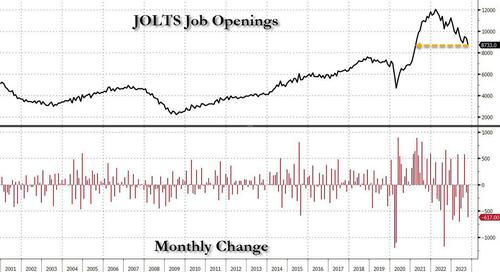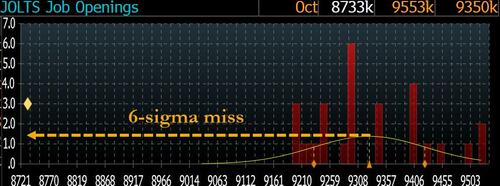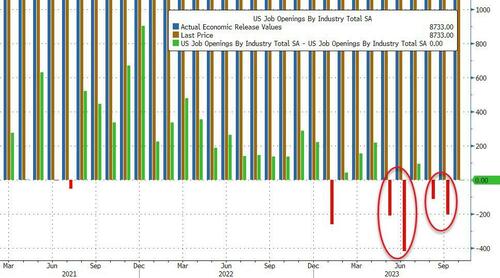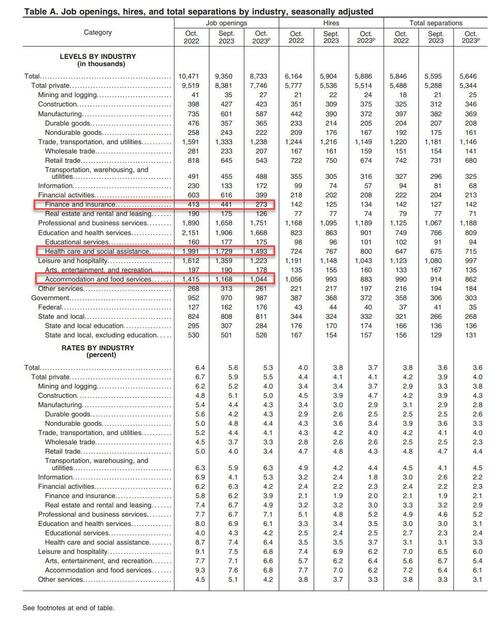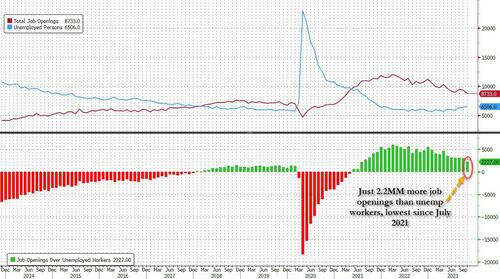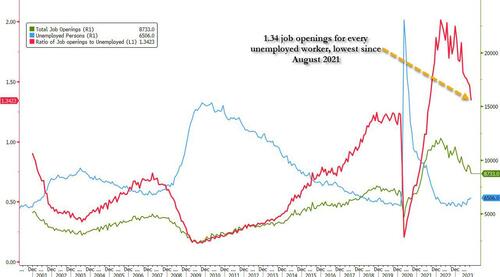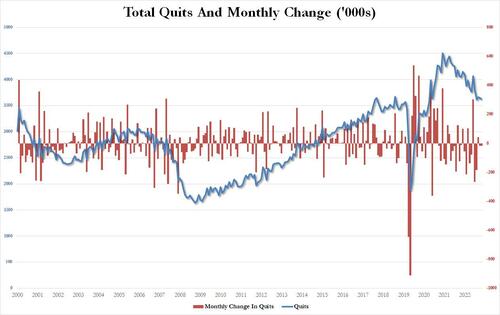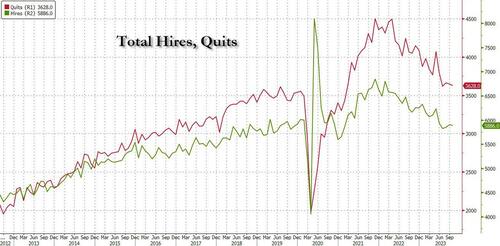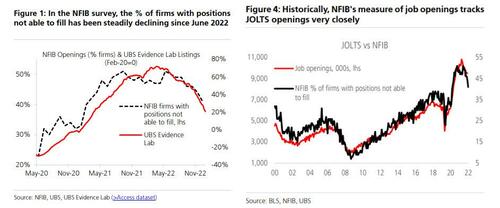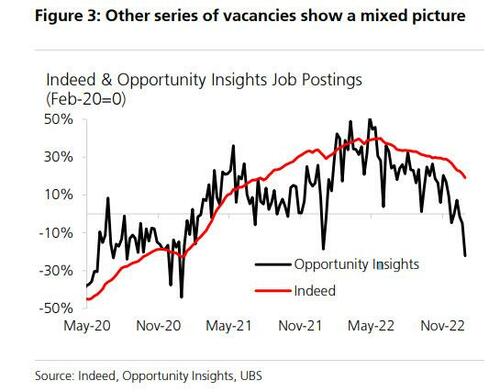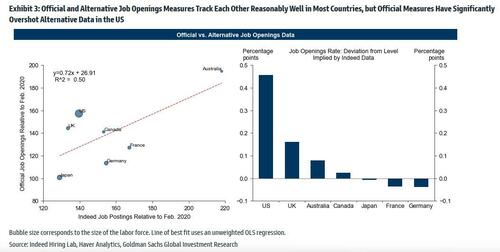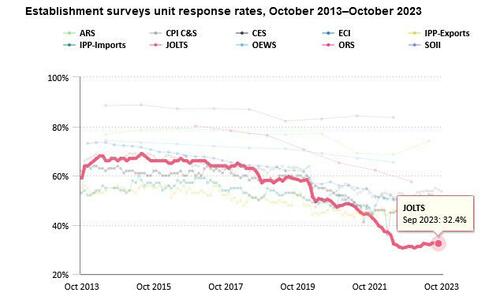Authored by Matthew Vadum via The Epoch Times,
The Supreme Court on Dec. 5 will take up an important but little-noticed case about “unrealized” income that considers the constitutional limitations on federal taxing power.

The case is significant because the court could use it to strike down the Mandatory Repatriation Tax (MRT), also known as the Section 965 transition tax, which was part of the Tax Cuts and Jobs Act approved by the Republican-controlled Congress in 2017 and signed into law by then-President Donald Trump.
Conservative constitutionalists say if the Supreme Court finds that the MRT violates the 16th Amendment to the Constitution, such a legal precedent could prevent Congress from enacting legislation to tax wealth.
Wealth tax proposals regularly surface in Congress. For example, Sen. Ron Wyden (D-Ore.) recently introduced a plan to tax the unrealized capital gains of high earners.
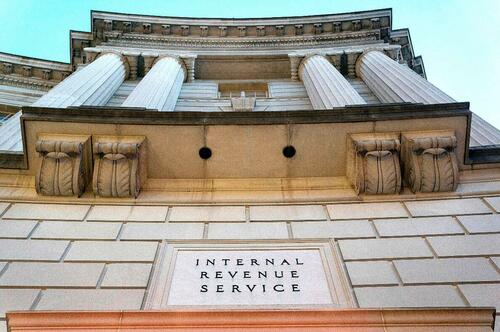
The Internal Revenue Service building in Washington on Jan. 24, 2023. The current Supreme Court case could change the tax code. (STEFANI REYNOLDS/AFP via Getty Images)
Liberal groups worry that invalidating the tax law could unleash chaos.
The left-leaning Institute on Taxation and Economy Policy said the case “could become the most important tax case in a century.”
That’s because “a broad ruling could destabilize our tax system, enrich many profitable corporations, and widen existing economic and racial inequalities.”
Since the 1960s, corporations have been able to move income across borders to avoid taxation. If the law is erased, “the floodgates to offshore tax dodging” could be opened “on a scale never seen before,” the group said in a recent commentary.
The 2017 law changed the way foreign income of U.S. corporations was taxed. Lawmakers created the tax because in their view too much money was being invested abroad and not benefiting U.S. tax coffers.
Before the change, much of that income wasn’t taxed until it returned, or was repatriated, to the United States. To transition to the new system, Congress imposed a one-time tax on outstanding unrepatriated foreign earnings of U.S. corporations.
KisanKraft supplies power tools to small-scale, individual Indian farmers with the aim of helping to make their operations more productive. The Moores had owned KisanKraft shares for more than a decade but never received any income from the shares because the company plowed all its profits back into the business. (Screenshot via The Epoch Times)
The law taxes U.S. corporate earnings abroad going back 30 years, even if the earnings haven’t been distributed. The statute also applies to U.S. taxpayers with 10 percent or more of shares in an overseas corporation as of the end of 2017.
That means taxing people on income they never received and never owned, according to the Competitive Enterprise Institute (CEI), which is providing legal representation to plaintiffs Charles and Kathleen Moore.
The Congressional Budget Office estimated in 2018 that the law would lead corporations to have a one-time tax liability of $347 billion.
The Moores, a married couple from the state of Washington, claim this tax violates the Constitution’s requirement that direct federal taxes must be apportioned among the states, as well as the Constitution’s prohibition against retroactive taxation.
The court agreed on June 26 to hear the case, Moore v. United States (court file 22-800). At least four of the nine justices had to vote to grant the petition for the case to move forward.
The Moores ended up in court after they invested in an India-based company founded by a friend. KisanKraft supplies power tools to small-scale, individual Indian farmers with the aim of helping to make their operations more productive. The Moores had owned KisanKraft shares for more than a decade but never received any income from the shares because the company plowed all its profits back into the business.
Unexpected IRS Bill
But after the new tax was enacted, the Moores received an unexpected tax bill from the IRS for $14,729 for additional income tax they owed, despite having never received any payments from KisanKraft.
Although such profits aren’t ordinarily considered income unless shareholders either receive dividends or sell the shares for a capital gain, the MRT attempts to tax these funds as income by simply declaring them to be taxable income, which is a legal fiction, according to the CEI.
The Moores lost in U.S. district court, appealed, and lost again. They asked the U.S. Court of Appeals for the 9th Circuit to rehear the case after a circuit panel affirmed the district court’s dismissal of the action seeking to invalidate the tax law provision, but on Nov. 22, 2022, a divided 9th Circuit again denied the couple’s petition.
“There is no constitutional prohibition against Congress attributing a corporation’s income pro-rata to its shareholder,” the appeals court ruled.
Four of the circuit judges dissented from the decision to deny rehearing.
Judge Patrick Bumatay, who was appointed by President Trump, wrote that the court erred in disregarding the realization requirement of the 16th Amendment by allowing an unapportioned direct tax on unrealized income—undistributed earnings of a foreign corporation owned by a U.S. taxpayer—without offering any other limiting principle.

A copy of the U.S. Constitution in Washington on Dec. 17, 2019. (Andrew Harnik-Pool/Getty Images)
The court opinion opens the door to new federal taxes on other kinds of wealth and property being categorized as an “income tax” without the constitutional requirement of apportionment, the judge said.
The Biden administration argues that the MRT is constitutional, and had urged the court not to hear the case.
The 16th Amendment
The Tax Cuts and Jobs Act “appears to be working largely as Congress envisioned,” U.S. Solicitor General Elizabeth Prelogar wrote in a brief filed with the court on May 16.
In a follow-up brief on Oct. 16, Ms. Prelogar said, “The Sixteenth Amendment authorizes Congress to tax shareholders’ pro rata shares of undistributed corporate earnings as income.”
But legal experts suggest the 16th Amendment is the obstacle that could be the tax’s undoing.
The amendment was enacted to allow the federal government to levy an income tax. Congress had previously tried to impose an income tax but its efforts were stymied by the Supreme Court.

A pedestrian walks toward the U.S. Supreme Court in Washington on June 5, 2023. The Supreme Court will hear a significant tax case on Dec. 5, 2023, and will hand down a decision by June 2024. (Alex Wong/Getty Images)
Ratified in 1913, the 16th Amendment states: “The Congress shall have power to lay and collect taxes on incomes, from whatever source derived, without apportionment among the several States, and without regard to any census or enumeration.”
Attorney Steven A. Engel of the Dechert law firm in Washington told The Epoch Times that the Biden administration “takes the position that the definition of income is malleable and subject to Congress’s discretion.”
“The Supreme Court has previously recognized that income requires ‘realization.’ It requires that the taxpayer actually received the money, and the Congress cannot eliminate that requirement without complying with the apportionment requirement of the Constitution.”
Mr. Engel, who filed a friend-of-the-court brief in the case on behalf of Americans for Tax Reform, acknowledged that the concept of “apportionment” is elusive to many people.
“The founders were concerned that Congress [should] not be able to tax directly certain forms of property in a way that created unequal burdens among the states. So they allowed Congress to impose taxes on transactions, like excises or duties, which people could avoid by not engaging in those transactions.
“But if Congress were going to directly tax property, such as a land tax, Congress would have to do that in a way that fell equally among all the states, which [is hard to do] because there is an uneven distribution of property—land is cheaper in some states than in others.”

A woman participates in a Tea Party rally to protest against the Internal Revenue Service’s targeting Tea Party and grassroots organizations for harassment, at the U.S. Capitol in Washington on June 19, 2013. (Mark Wilson/Getty Images)
The 16th Amendment, however, allowed Congress to tax income, and was added after the Supreme Court ruled that under certain circumstances income taxes could be direct taxes, Mr. Engel said.
“So the question posed by the Moore case is, ‘What is the definition of income under the 16th Amendment?’ And specifically, ‘Can Congress do away with the realization requirement?’”
Unfavorable Appeals Court Ruling
The 9th Circuit said there was no need for there to be a realization requirement in the Moores’ case because under the MRT they are being taxed based on their stock ownership, that is, their share of the accumulated earnings of the foreign company over the past 30 years, even though they have not received any of the money themselves, Mr. Engel said.
Although the Moores argued the MRT was a tax on their property, the circuit court said, “If Congress says it’s income, it’s income, even if you didn’t realize that income,” Mr. Engel said.
It’s difficult to predict what the Supreme Court will do in this case, but generally the court “does not grant cases unless it has a concern with the correctness of the lower court opinion,” he said.
“There was something about the 9th Circuit decision that at least four justices thought was worthy of the court’s review and potential correction.”

A customer enters a Block Advisors tax preparation office in San Anselmo, Calif., on April 15, 2019. April 20 is the deadline for U.S. residents to file their income tax returns. (Justin Sullivan/Getty Images)
Attorney Jim Burling, vice president of legal affairs for the Pacific Legal Foundation, a national nonprofit public interest law firm that challenges government abuses, also spoke to The Epoch Times.
The MRT is “a very limited wealth tax” that applies to unrealized capital gains abroad, he said.
“But the implications are absolutely huge. Because if you can impose a wealth tax, and it doesn’t have to be apportioned among the states … then the chances that the federal government would impose one and try to go after our assets are huge.
“We don’t know exactly what the court is going to do as far as … direct versus indirect tax, and the implications are huge as far as what future taxation of Americans could be.”
Mr. Burling predicts the Moores will prevail.
“I think the Supreme Court is going to reject the idea that you can have a wealth tax because that really requires a Constitutional amendment, not a questionable interpretation of an ambiguous statement in the Constitution,” he said.
“I think the court is going to be askance at this end-run around because this is essentially a wealth tax, [and is] essentially what Congress attempted to do as an income tax before the Constitution was amended to allow the income tax.”
Steven J. Allen, a distinguished senior fellow at Capital Research Center, a watchdog group, said his concern is that if the Supreme Court doesn’t strike down the MRT, there will be little to stop Congress from levying new and large taxes in the future.
“There are always enough Republicans who will join with the Democrats to raise taxes, which helps to explain the current high tax level that we have,” Mr. Allen told The Epoch Times.
“The fear is that the people who support raising taxes are always looking for different ways to do it. And if they can come up with a tax on the number of miles you drive in your car, then they will put that in there. If they can come up with a tax on wealth, then they will enact a tax on wealth.
“History shows that higher taxes don’t necessarily increase revenue. Yet, that’s the theory they’re operating on,” Mr. Allen said.
“I think that it’s just important to restrict the power of government to tax whenever you can, because the power to tax is the power to destroy—that’s a famous legal principle—and you want to limit the destructive power of government.
“That’s what the Constitution is about,” Mr. Allen said.
Former U.S. Solicitor General Paul Clement expressed the same concern at a Sept. 20 event hosted by The Heritage Foundation, a think tank.

Former U.S. Solicitor General Paul Clement (R) talks to reporters outside the U.S. Supreme Court in Washington on March 25, 2014. (Chip Somodevilla/Getty Images)
If the MRT is upheld, “then there’s no reason for the federal government to wait until you actually take money from your stocks that have appreciated over time and take it as a capital gain,” he said.
“I think the issue here is much more important than meets the eye.”
Read more here…
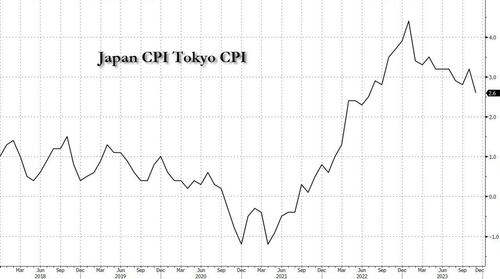





 (Grudging credit for the graphics goes to Bing’s Image Creator, which refused to accept the prompt until I said the rubble was bouncing because of a gas explosion and not a bomb. Way to discredit trust and safety, Bing!)
(Grudging credit for the graphics goes to Bing’s Image Creator, which refused to accept the prompt until I said the rubble was bouncing because of a gas explosion and not a bomb. Way to discredit trust and safety, Bing!)
